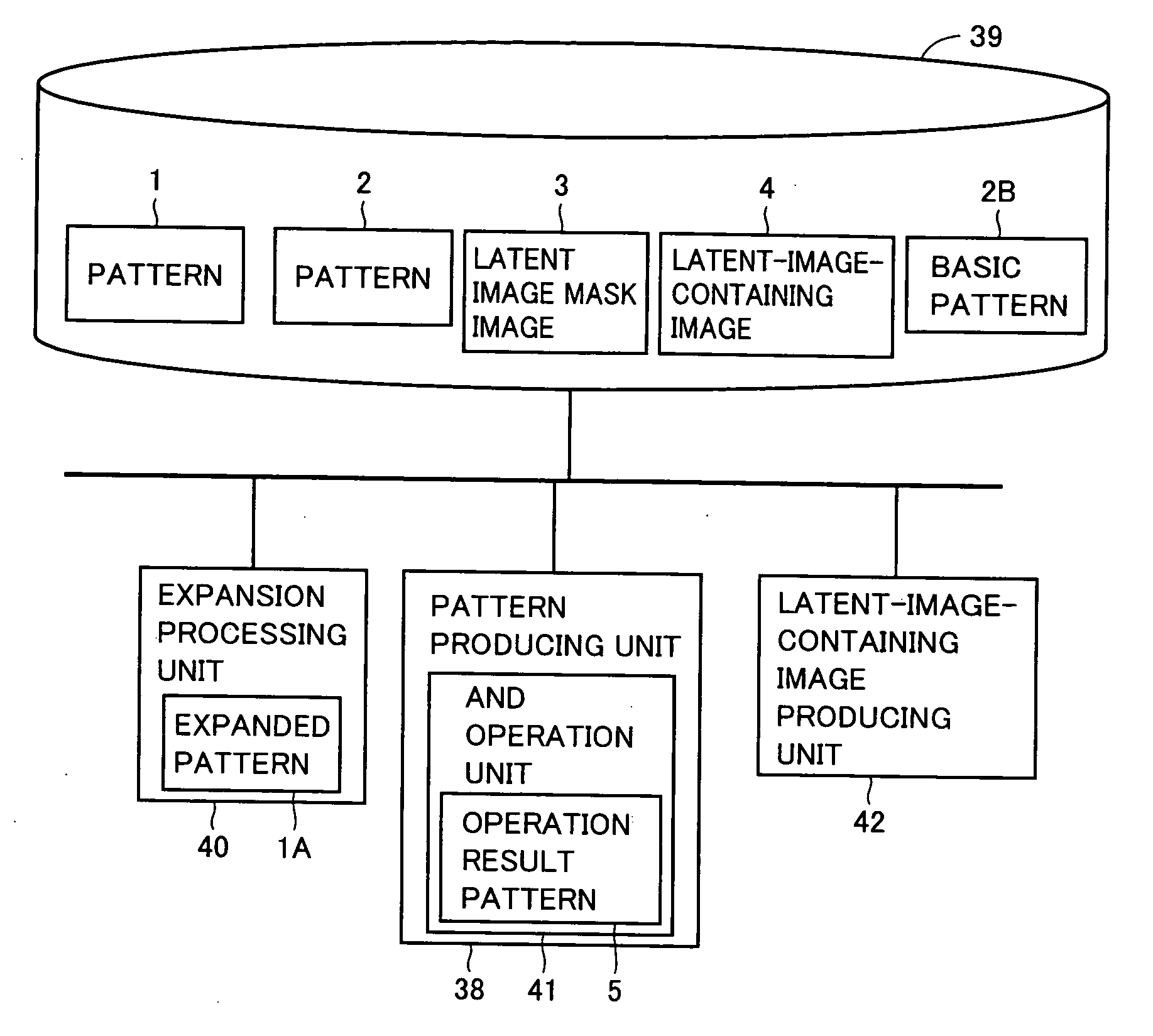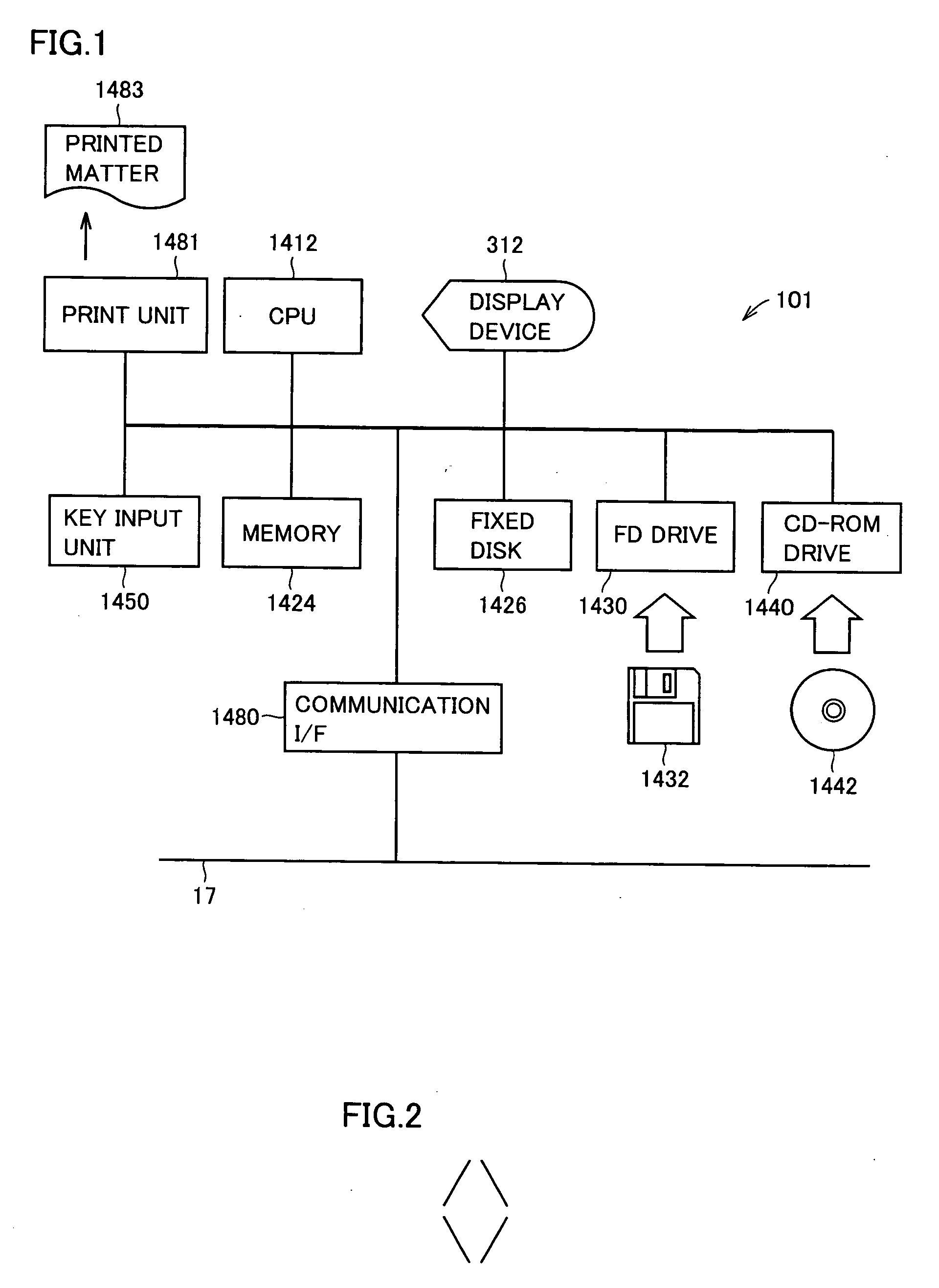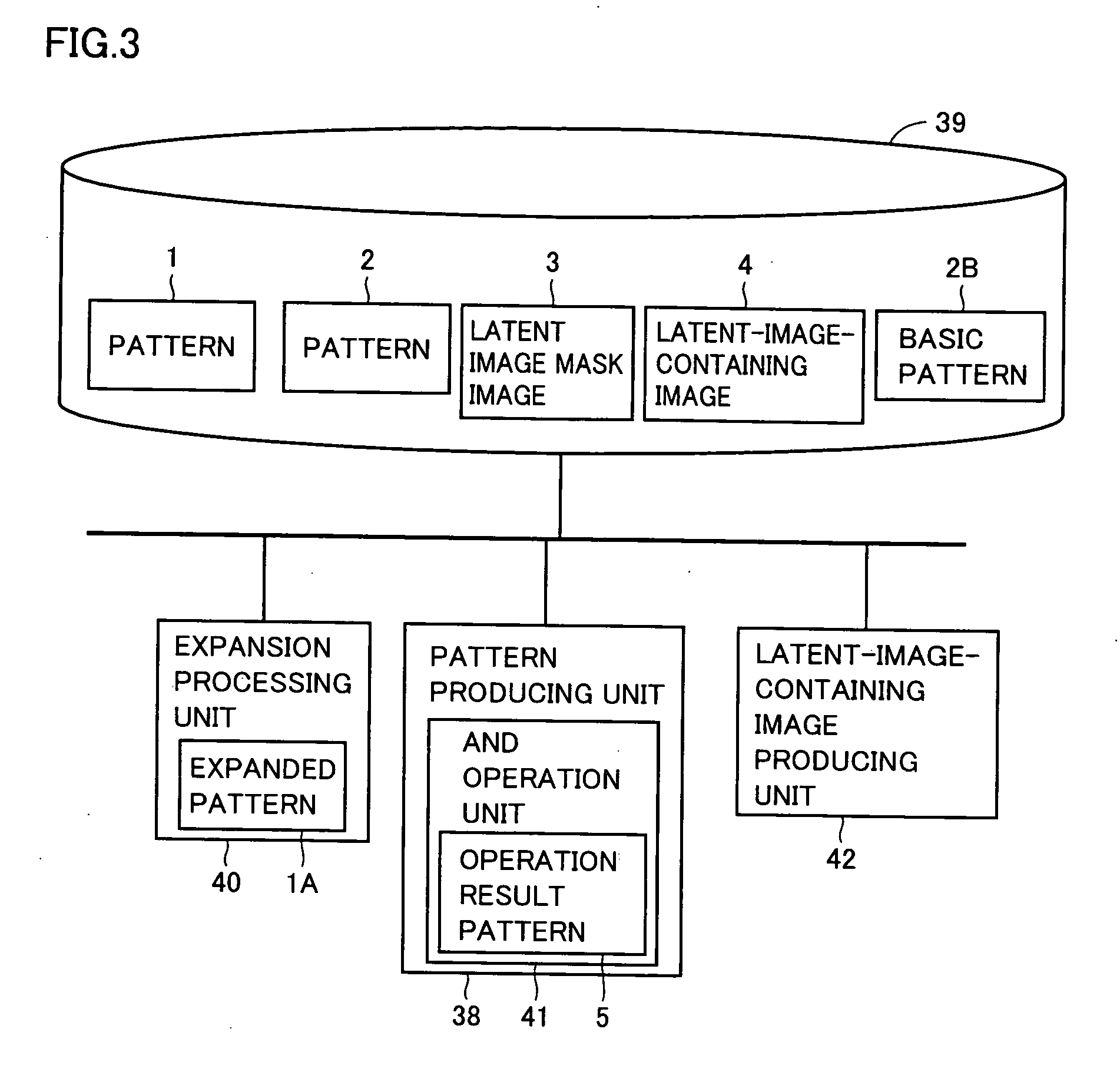Image forming apparatus and method forming a latent image for embedding information in an image
a technology of image forming apparatus and latent image, which is applied in the field of image processing apparatus and a method, can solve the problems of increasing the cost of image processing, becoming a significant social issue, and waste of printed sheets,
- Summary
- Abstract
- Description
- Claims
- Application Information
AI Technical Summary
Benefits of technology
Problems solved by technology
Method used
Image
Examples
first embodiment
[0095] A first embodiment of the invention will now be described with reference to the drawings.
[0096] (Function Structure)
[0097]FIG. 3 shows a function structure according to this embodiment. Referring to FIG. 3, the image processing apparatus according to the embodiment includes a data storing unit 39, an expansion processing unit 40, a pattern producing unit 38 having an AND operation unit 41 and an image producing unit 42 producing a latent-image-containing image, i.e., an image containing a latent image. Data storing unit 39 stores in advance a pattern 1 that is an image data of a dot pattern, a basic pattern 2B that is an image data of a dot pattern and a mask image data 3 for the latent image, and further stores a pattern 2 that is image data of a dot pattern produced by pattern producing unit 38, and data 4 of the latent-image-containing image produced by image producing unit 42. Data storing unit 39 corresponds to a predetermined area in memory 1424 or fixed disk 1426. Pa...
second embodiment
[0116] A second embodiment of the invention will now be described with reference to the drawings.
[0117] (Function Structure)
[0118]FIG. 12 shows a function structure according to this embodiment. Referring to FIG. 12, an image processing apparatus according to this embodiment includes data storing unit 39, a smoothing processing unit 43, a pseudo shading processing unit 44 and a latent-image-containing image producing unit 45. Data storing unit 39 stores, in advance, patterns 1 and 2A, latent image mask image data 3 and latent-image-containing image data 7 produced by latent-image-containing image producing unit 45. Data storing unit 39 corresponds to a predetermined area in memory 1424 or fixed disk 1426. Smoothing processing unit 43, pseudo shading processing unit 44 and latent-image-containing image producing unit 45 correspond to functions of programs prestored in memory 1424 or fixed disk 1426, and CPU 1412 reads and executes the programs to achieve the functions of the respec...
third embodiment
[0139] A third embodiment of the invention will now be described with reference to the drawings.
[0140] (Function Structure)
[0141]FIG. 18 shows a function structure according to the embodiment. Referring to FIG. 18, the image processing apparatus according to the embodiment includes data storing unit 39, expansion processing unit 40, a dot removing unit 47, an OR operation unit 48 and a latent-image-containing image producing unit 49. Data storing unit 39 prestores patterns 1 and 2A, latent image mask image data 3 and latent-image-containing image data 9 produced by latent-image-containing image producing unit 49. Expansion processing unit 40, dot removing unit 47, OR operation unit 48 and latent-image-containing image producing unit 49 correspond to functions of programs prestored in memory 1424 or fixed disk 1426. CPU 1412 reads and executes the programs to achieve the functions of the respective units. These units may be formed of dedicated circuits.
[0142] Patterns 1 and 2A as ...
PUM
 Login to View More
Login to View More Abstract
Description
Claims
Application Information
 Login to View More
Login to View More - R&D
- Intellectual Property
- Life Sciences
- Materials
- Tech Scout
- Unparalleled Data Quality
- Higher Quality Content
- 60% Fewer Hallucinations
Browse by: Latest US Patents, China's latest patents, Technical Efficacy Thesaurus, Application Domain, Technology Topic, Popular Technical Reports.
© 2025 PatSnap. All rights reserved.Legal|Privacy policy|Modern Slavery Act Transparency Statement|Sitemap|About US| Contact US: help@patsnap.com



